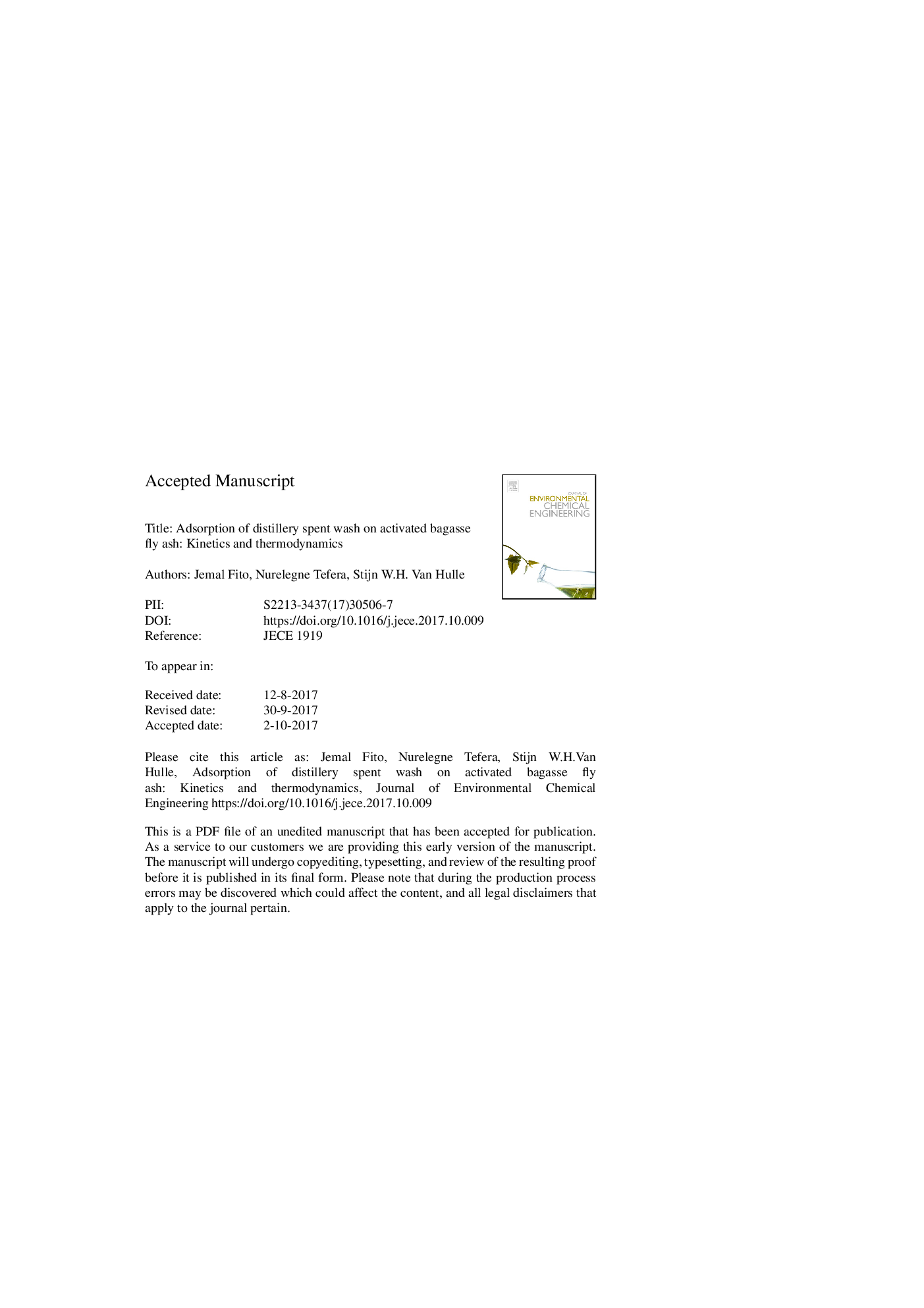| Article ID | Journal | Published Year | Pages | File Type |
|---|---|---|---|---|
| 4908338 | Journal of Environmental Chemical Engineering | 2017 | 28 Pages |
Abstract
This study aimed to characterize distillery spent wash and COD removal from it using bagasse fly ash (BFA). The results of the analyses showed that the average value of BOD5 and COD were 35,990 mgLâ1 and 13,9671 mgLâ1, respectively. High amount of total nitrogen (1217 mgLâ1), total phosphorous (45 mgLâ1), total solids (156 mgLâ1) and low acidity (pH 4) were recorded. Adsorption of this spent wash on BFA was investigated at different temperatures, contact times, initial COD concentrations, pH solutions and adsorbent (BFA) doses. Raising temperature from 15 to 328 K resulted in increasing the uptake of the organic matter from 29.5 to 75.5%. Varying the initial COD concentration from 1000 mgLâ1 to 6000 mgLâ1 increased the adsorptivity capacity (qe) from 6 to 92.40 mg gâ1 and resulted in an increase in removal efficiency from 24 to 61.6%. Adsorptive capacity (116.30 mg gâ1) calculated by the pseudo-second order model (R2 = 0.98) indicated that pseudo-second order kinetic model fitted better with the experimental data. Moreover, the Gibbs free energy change (ÎG) (â5.61 to â11.84 kJ molâ1)) showed that adsorption process was spontaneous whereas the positive value of the ÎH (42.29 kJ molâ1) indicates an endothermic process. Similarly, increasing the degree of disorder at the liquid-solids interfaces was observed from entropy change (ÎS = 0.17 kJ (Kmol)â1). In general, thermodynamic study revealed that adsorption process was feasible, spontaneous and endothermic; and the application of BFA is the promising option for removal of organic matter (COD) from molasses spent wash.
Related Topics
Physical Sciences and Engineering
Chemical Engineering
Chemical Engineering (General)
Authors
Jemal Fito, Nurelegne Tefera, Stijn W.H. Van Hulle,
